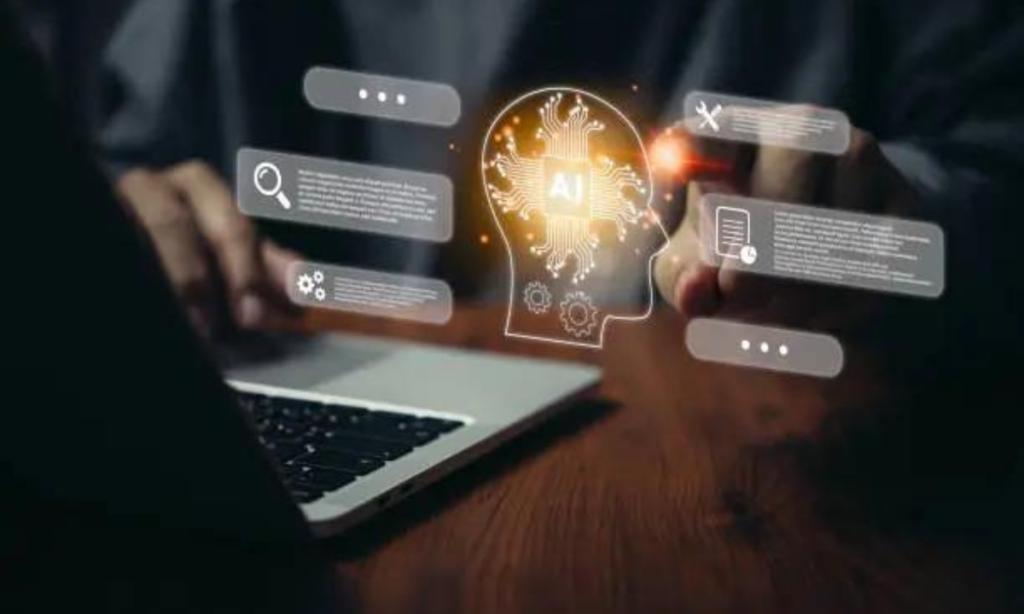Introduction
Artificial intelligence is advancing at a breakneck pace thanks to innovations in deep learning and neural networks. But this progress would not be possible without the specialized hardware designed to run these AI models efficiently. Google and startups like Anthropic recognize the value of custom silicon for AI workloads. Both tech giants recently unveiled new AI chip architectures that promise big leaps in performance compared to relying on general purpose GPUs alone.
In this in-depth guide, we’ll compare Google’s new TPU v5 chip to Anthropic’s Cerebras CS-2 system. We’ll analyze the unique designs of each chip, their capabilities, benchmarks, and how they may shift the balance of power in AI silicon. The trillion dollar AI market hangs in the balance as these silicon heavyweights battle for dominance.
The Critical Role of AI Chips
First, let’s look at why AI chips have become so vital for progress. State-of-the-art AI today depends on neural networks – extremely computationally intensive models with billions of parameters. Training and running these massive models requires specialized hardware optimizations.
Some factors that make AI workloads so demanding:
- Highly parallel math – Matrix multiplications and linear algebra underpin neural nets. These operations must be done simultaneously on huge arrays of data.
- Massive datasets – Models are trained on enormoussets of data like images, text, or voice samples. Data flows continuously through the chip.
- Low precision – AI models can work with lower precision data compared to traditional computing. This allows more operations per cycle.
- High throughput – Chips must process thousands of operations per second to sustain model training. Bandwidth is a major bottleneck.
- Low latency – For inference, real-time AI applications demand very fast response times on new data.
- Power efficiency – The scale required for modern AI translates to huge electricity consumption. Efficient chips reduce costs and environmental impact.
Because of these constraints, general purpose GPUs often struggle to meet the needs of large-scale AI systems. Custom silicon delivers massive improvements in the specialized metrics like tensor operations per second, low precision computation, and model parallelism that AI workloads demand.
For tech giants like Google and Anthropic, designing their own AI chips in-house is now seen as vital to maintaining a competitive edge in the field. The AI chips arms race is on.
Introducing Google’s TPU v5 Chip
Google has been at the forefront of designing specialized silicon for neural networks since their first Tensor Processing Unit (TPU) in 2016. The recently announced TPU v5 chips represent Google’s 5th generation design, claiming major jumps over previous versions.
Some key stats on Google’s new TPU v5:
- Up to 11 petaFLOPS of compute power at peak
- Up to 32GB high bandwidth memory (HBM) integrated
- Optimized for sparse and low precision models
- Liquid cooling for max performance in data centers
- 4x faster than TPU v4
The TPU v5 improves upon Google’s previous generations in several ways:
- More compute cores – TPU v5 supports more independent tensor cores to allow extreme model or data parallelism.
- Faster memory – Increased high bandwidth memory integrated directly onto the chip reduces data transfer bottlenecks.
- Sparsity optimizations – The design works well with sparse models, improving efficiency.
- Bfloat16 support – TPU v5 adds support for bfloat16 numeric format, meaning more operations per cycle.
- Liquid cooling – New liquid cooling integration allows the chips to run reliably at peak speeds.
- Next-gen networking – Faster networking between chips improves model scaling across multiple TPU v5s.
Combined, these advances promise to keep Google TPUs as the fastest custom silicon available for training and running massive AI models. But the lead may not last long with rivals like Anthropic’s Cerebras on their tail.
Anthropic’s Cerebras CS-2 Chip
While less well known than Google, Silicon Valley based startup Cerebras Systems is aiming to beat Google at their own game with custom designed AI chips. Cerebras takes a very different architectural approach to Google.
Cerebras’ new CS-2 chip sports these eye-opening specs:
- 56 trillion transistors – compares to Google’s 28 billion
- 850,000 AI cores – vs Google’s 128,000
- 40GB onboard memory – compared to 32GB for TPU v5
- Over 2 exaFLOPS theoretical peak
Some of the unique advantages of Cerebras’ design philosophy:
- Wafer-scale integration – Cerebras packs the compute, memory, and interconnects onto a single massive chip, avoiding challenges integrating multiple chips.
- Onboard memory – CS-2 has enormous onboard memory, minimizing data movement which saves power and time.
- Redundancy – CS-2 adds redundancy to ensure a fault in one area won’t fail the whole chip.
- Dataflow architecture – The design optimizes for minimal data movement and latency between cores.
- Programmable – Users can program low level parameters on CS-2 not possible on fixedfunction TPUs.
Cerebras takes a “no compromises” approach on specs, resulting in the highest transistor count and largest single-chip size of any processor produced to date. But the design faces manufacturability challenges. Only time will tell if Cerebras’ bold wafer-scale bet pays off against more modular opponents.
Benchmarks: TPU v5 vs CS-2
How do these radically different design philosophies stack up on real-world AI workloads? Early benchmark results provide some insights.
Google has boasted TPU v5 achieves up to 6x faster training times over TPU v4 on a large transformer language model. Specific benchmarks shared:
- BERT training – cut time down from 7 days on v4 to 11 hours on v5
- ResNet-50 training – reduced from 2 hours to 17 minutes
- RNN-T training – improved throughput from 252 to 1788 samples per second
That’s impressive scaling versus their previous generation chip.
Meanwhile, Cerebras has shared benchmarks showing CS-2 completing BERT training in 56 minutes. Google’s TPU v5 took 84 minutes on the same model and dataset. CS-2 achieved 1.5x faster training time in this controlled test.
But Google claims their TPU v5 system can achieve higher performance when scaled up. A cluster of 2048 TPU v5 chips hit 9.9 petaFLOPS on a mixed precision BERT run – a record for AI workloads.
Very large sparse models may run faster on Google’s optimized tensor processing cores, while smaller dense models seem to favor Cerebras’ approach today. More benchmarks over wider applications are needed.
It’s clear both chips sit at the bleeding edge of what’s possible in training advanced AI models. But hardware prowess alone isn’t everything…
Software and Integration Advantages
Delivering finished chips is just one piece of the puzzle. Integrating new silicon into software stacks, data center workflows, and existing codebases is equally important.
Here Google likely has an edge over startups like Cerebras due to its massive in-house infrastructure. TPU v5 will slot into Google’s hosted services like Vertex AI and Cloud TPUs enabling customers scalable access.
Anthropic also recently partnered with Google Cloud to provide its users with TPU access. This integration with Google’s hardware ecosystem grants Anthropic AI models greater scalability.
In contrast, Cerebras faces more work to get users migrating model training pipelines to their system. CS-2 exposes a fundamentally different programming paradigm that may require software rewrites.
But all chips in this market need to prove seamless integration with popular machine learning frameworks like TensorFlow and PyTorch. Silicon that demands too much optimization work risks alienating time-pressed researchers.
The Trillion Dollar AI Chip Prize
Dominating the AI chip space has become vital in the trillion-dollar race to lead artificial intelligence. The enormous compute demands of today’s AI systems means proprietary hardware offers tech giants a competitive moat.
Google is counting on TPU v5 to protect its position providing hosted AI services to big customers across industries. Cloud-based access lowers barriers for companies to benefit from its state-of-the-art silicon.
Anthropic is similarly using cutting-edge chips to power internal development. Its recently open sourced Constitutional AI requires immense compute to train safely. Partnering with Google Cloud’s TPUs helps democratize access to Anthropic’s AI research.
For Cerebras, selling its CS-2 system directly allows monetizing its technical edge to the highest bidder. Large companies like Argonne National Laboratory have already purchased CS-2 for scientists to push boundaries.
In the end, there are likely enough high-value AI chip applications to support multiple winners. But expect the competition to remain fierce as the technology determining the AI future.
The Outlook for responsible AI Chips
While chipspecs dominate the headlines, ultimately the benefits of AI come down to responsible applicationsto improve human lives. Here Anthropic stands apart with its focus on AI safety.
Anthropic collaborates with partners like Intel to develop Constitutional AI enabled by secure enclaves and other trustworthy hardware. This ensures oversight so even the most advanced AI cannot harm human values.
Google and Cerebras may eye this responsible AI segment next. Chips optimized for privacy, transparency, and alignment with ethics could provide a moral high ground.
Regardless of who leads the hardware race, society needs AI guided by Constitutional checks and balances. Compute in the service of responsible AI that uplifts humanity is the true prize.
Conclusion
Google and Anthropic aim to dominate AI’s next decade with breakthrough custom silicon designs like TPU v5 and Cerebras CS-2. Orders of magnitude more compute power enables training bigger, better AI models. But integration, scalability and responsible development ultimately determine the winners. Watch for more surprising innovations as the AI chip wars heat up. The trillion dollar artificial intelligence future will be shaped at the intersection of ethics and raw computing prowess.

FAQs
What is Google’s new TPU v5 chip?
The Tensor Processing Unit (TPU) is Google’s custom-developed AI accelerator chip. The TPU v5 is their latest 5th generation design, delivering up to 4x higher performance than the previous TPU v4.
What makes the TPU v5 design unique?
TPU v5 features more cores for parallelism, integrated high bandwidth memory, optimizations for sparsity and low-precision computations, and liquid cooling to maximize performance.
What AI tasks is TPU v5 optimized for?
Google designed TPU v5 specifically for training and running large transformer-based AI models. It excels at the tensor computations required for deep learning.
What is Anthropic’s new Cerebras CS-2 chip?
The Cerebras Systems CS-2 is an AI accelerator chip featuring a wafer-scale design with 850,000 cores and 40GB of on-chip memory. It aims to minimize data movement bottlenecks.
How is CS-2 different from Google’s TPUs?
The CS-2 uses a radically different wafer-scale architecture integrating compute, memory, and interconnects all on one massive chip. This contrasts with TPU’s more modular design.
Why does AI chip performance matter?
Faster training and inference allows companies to build more advanced neural network-based AI applications across fields like computer vision, natural language processing, and more.
How do the chips impact responsible AI development?
Powerful hardware enables companies like Anthropic to train AI models reinforced with Constitutional safeguards to align with human values.
What is the future outlook for AI chips?
Expect rapid iteration and new innovations as chipmakers compete to provide the computation foundation enabling the responsible AI applications of the future.

